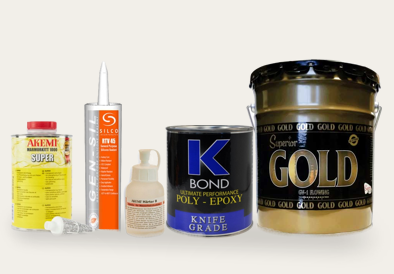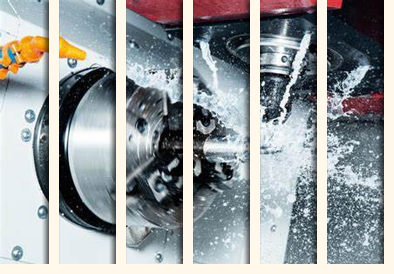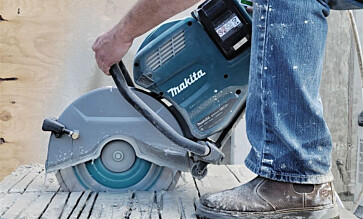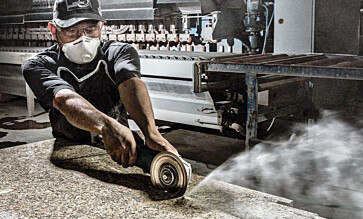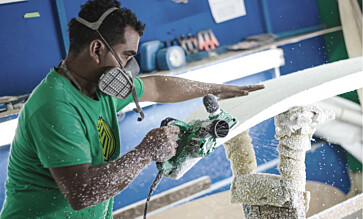When it comes to installing natural stone tiles, choosing the right adhesive is crucial for ensuring a secure and long-lasting bond. With a wide variety of adhesives available, each with its own properties and suitability, it's important to understand the factors that influence adhesive selection. In this guide, we'll explore the key considerations when choosing adhesives for natural stone tiles and provide valuable insights to help you make an informed decision.
Understanding the Types of Adhesives
Before diving into the selection process, let's familiarize ourselves with the common types of adhesives used for natural stone tiles:
- Cement-based adhesives: These adhesives are widely used for a variety of natural stone tiles, including marble, granite, limestone, and slate. They offer excellent bonding strength and are suitable for both interior and exterior applications.
- Epoxy adhesives: Ideal for bonding natural stone tiles in areas prone to moisture or high humidity, epoxy adhesives provide superior water resistance and durability. They are commonly used for applications such as showers, swimming pools, and countertops.
- Polyurethane adhesives: Known for their flexibility and high bond strength, polyurethane adhesives are suitable for bonding natural stone tiles with varying absorption rates. They are particularly useful for uneven substrates and can accommodate movement and vibration.
- Modified silicone adhesives: These adhesives are designed for specific applications where flexibility and resistance to environmental factors are essential. They are commonly used for bonding natural stone tiles in areas exposed to extreme temperature variations, UV light, or heavy foot traffic.
Factors to Consider
When selecting adhesives for natural stone tiles, consider the following factors:
- Tile type and size: Different adhesives may be recommended based on the type of natural stone tile (e.g., marble, slate) and its size (e.g., large-format tiles). Consult the manufacturer's guidelines or seek professional advice to ensure compatibility.
- Substrate compatibility: Assess the substrate on which the tiles will be installed, such as concrete, plywood, or existing tile surfaces. Choose an adhesive that is compatible with the substrate and offers strong adhesion.
- Environmental conditions: Evaluate the installation environment, including temperature, humidity, and exposure to water or chemicals. Select an adhesive that can withstand these conditions for long-term performance.
- Application method: Consider the application method, whether it's a traditional trowel-applied adhesive or a rapid-setting adhesive for time-sensitive projects. Follow the manufacturer's recommendations for proper application techniques.
- Drying and curing time: Take into account the drying and curing time of the adhesive, especially if you have specific project timelines. Ensure sufficient curing time for the adhesive to achieve its maximum strength before subjecting the tiles to stress or foot traffic.
Installation Best Practices
To ensure successful installation, follow these best practices:
- Proper surface preparation: Clean and level the substrate, removing any contaminants or debris that could affect the adhesion of the natural stone tiles.
- Adhesive coverage: Achieve full coverage of the adhesive on the back of each tile to ensure a strong bond. Use the recommended trowel size and technique for consistent coverage.
- Open time and adjustability: Adhesives have specific open times during which tiles can be adjusted before the adhesive sets. Follow the manufacturer's instructions to avoid premature setting or extended open times that could compromise the bond.
- Grouting considerations: Select a compatible grout that complements the adhesive and natural stone tiles. Allow sufficient curing time for the adhesive before grouting.
Conclusion
Choosing the right adhesive is essential for successful installation and long-lasting performance of natural stone tiles. By understanding the different types of adhesives available and considering factors such as tile type, substrate compatibility, environmental conditions, application method, and drying time, you can make an informed decision. Additionally, following proper surface preparation techniques, achieving full adhesive coverage, adhering to open time guidelines, and selecting compatible grouting materials will contribute to a secure and visually pleasing installation. Remember to consult manufacturer guidelines, seek professional advice when needed, and prioritize quality to ensure that your natural stone tile project stands the test of time, providing both beauty and durability.
With the knowledge and insights shared in this guide, you can confidently select the appropriate adhesive for your specific natural stone tile installation needs. Happy tiling!

